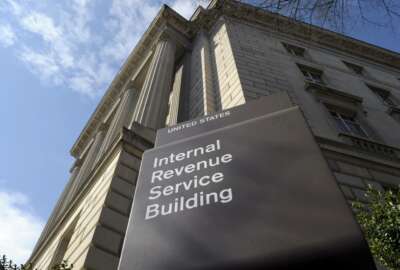IRS hit a ‘big milestone’ to wean itself off paper. What comes next?
A backlog of paper-based tax returns and correspondence hobbled the IRS at the height of the COVID-19 pandemic.
The IRS is taking major strides to wean itself off paper.
The agency’s Document Upload Tool is giving taxpayers an online option to submit required documents to the IRS when they get a notice from the tax agency in the mail.
Taxpayers no longer have to snail-mail their documents, and they can expect a faster response from the agency. The IRS launched the Document Upload Tool in 2021, and recently received its millionth submission from the tool.
IRS Commissioner Danny Werfel said in a statement that the Document Upload Tool “is a key part of our ambitious initiative to transform the IRS into a virtually paperless agency, and we continue to see increased use of this by taxpayers.”
Wanda Brown, project director of Inflation Reduction Act Implementation within the IRS’ Wage and Investment division, called the 1 million submissions a “big milestone” for the Document Upload Tool.
“Consider the fact that we get a lot of paper in from the mail, this is making a dent in that,” Brown said on June 5 in a panel discussion on IRS IT modernization hosted by the National Taxpayers Union Foundation.
The IRS estimates more than 94% of individual taxpayers no longer need to send mail to the agency, and that 125 million pieces of correspondence can be submitted digitally each year.
“People say, ‘Oh, you’re just digitizing paper. Yes, but we’re providing access to it,” said Darnita Trower, the director of emerging programs and initiatives at the IRS. “Think about all the times a taxpayer has called and you need something. Someone somewhere has to make a request to files, to go pull the file and get that piece of paper. We are now providing data at your fingertips. You can just go to the screen search for it and render it as long as you have the security rights to do so.”
Brown and Trower are both finalists for this year’s Service to America Medals program — in addition to Gerald Johnson, an IRS IT specialist.
A backlog of paper-based tax returns and correspondence hobbled the IRS at the height of the COVID-19 pandemic. The National Taxpayer Advocate went so far as to call paper the agency’s “kryptonite.”
For taxpayers who still prefer filing paper tax returns, Trower said the IRS is working on being able to digitize that paper return.
“If you choose to send us the paper, we will process it. But we are ushering in some nice tools with the modernization. We don’t intend to have people continue keying in tax returns manually. We want to scan and extract that data,” she said.
The Treasury Inspector General for Tax Administration found the IRS received about 1.2 million paper tax returns during this year’s filing season. That’s about an 8.5% reduction from the more than 1.3 million paper tax returns it handled the previous year.
“We are actively working on one of our initiatives, so that for taxpayers that choose to send in their tax return to us via paper, that we’re able to take that and really put it into a digital format and process it through our downstream systems,” Trower said.
The IRS is also scanning and digitizing some of the paper documents at its service centers.
“It’s a two-pronged approach – reducing the amount of paper that we have coming into the organization and files that we’re storing. Being able to scan some of that paper, that helps us to make data available, information and images available for our employees, so they can assist the taxpayers,” Brown said.
The IRS sends out about 3,600 notices and letters to taxpayers. But as of April this year, the agency now has 20 of its most commonly used forms available to fill out and submit on mobile devices.
“Taxpayers can go to IRS.gov, pull down their form, enter it on any device. It’s adaptive – and be able to just hit submit,” Brown said.
Trower said the IRS plans to make an additional 150 forms mobile-adaptive over the next calendar year.
“The majority of those that require a response, you can just go to any device and upload and provide your response to the IRS,” she said.
The IRS is also taking steps to modernize and improve its internal systems, in an effort to provide better customer service to taxpayers.
The agency is looking to consolidate its 63 legacy case management systems into one enterprise case management system.
The IRS has been working on moving to a single enterprise case management for years. Trower said the next step is to roll out a digital inventory management system.
“That will allow us to have enhanced workflows, get things where they need to be, if it landed in the wrong bucket, we can redirect it. But more importantly, when it comes to case management, we’re building it on the same platform as enterprise case management,” she said.
The IRS next year will also test out a long-awaited update to the Individual Master File, its authoritative data source for individual tax account data.
The IRS expects to turn on a modernized version of the IMF for the first time in April 2024 – after the tax filing season — and run it in parallel with its legacy system. Werfel said the IRS hopes to have the updated IMF up and running by the following filing season.
Trower said the IMF serves as the backbone of the filing season, and modernizing the legacy system will give IRS employees “real-time access to all the data that they need to be able to do their job.”
She added that the updated IMF will also give taxpayers better access to their own history of interactions with the IRS — and the status of receiving those.
“You should be able to upload something from your phone and log into your account and see, ‘Here’s my upload that’s tied to this notice that I received,’ and maybe get some of your own questions answered — like, ‘Did you get it?’ That’s probably a common question — ‘I sent something in the mail. Did you get it?’” Trower said.
Jessica Lucas-Judy, director of strategic issues at the Government Accountability Office, said the IRS, as it modernizes its legacy IT infrastructure, should also address the fact that it doesn’t have a comprehensive inventory of systems that contain taxpayer information.
“It’s very difficult to know if you are being successful in protecting that information if you don’t know where it is,” Lucas-Judy said.
GAO recommends the IRS complete a comprehensive inventory of where it stores taxpayer information.
Much of the IRS’ ongoing IT modernization efforts are supported by the Inflation Reduction Act, which gives the agency about $60 billion in multi-year modernization funds.
The legislation provided $4.8 billion in business systems modernization at the IRS.
“Consistent funding for the IRS is key. Right now, with the IRA, we’re able to make leaps and strides in that space. With the funding, we can do the right planning, we can incorporate new technology,” Trower said.
Copyright © 2025 Federal News Network. All rights reserved. This website is not intended for users located within the European Economic Area.
Jory Heckman is a reporter at Federal News Network covering U.S. Postal Service, IRS, big data and technology issues.
Follow @jheckmanWFED






